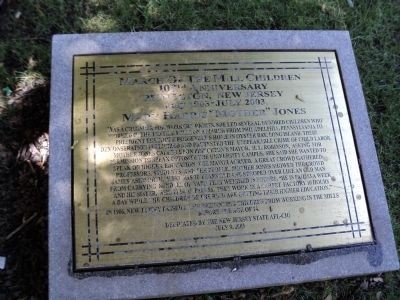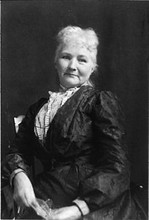Historical Marker: March of the Mill Children - 100th Anniversary
Introduction
Text-to-speech Audio
In 1903, several hundred child textile mill workers, led by labor activist Mary Harris "Mother" Jones (1837-1930), marched from Philadelphia to Oyster Bay, New York, in a protest against child labor. The president at the time was Theodore Roosevelt, whose home outside of Washington D.C. was in Oyster Bay. On their way to New York, Jones asked the mayor if she could give a speech about higher education here at Princeton. He agreed but Jones took it upon herself to talk about the dangerous, deplorable working conditions child workers were subjected to. The march did not have an immediate impact but it did bring the issue to the forefront and in 1906, New Jersey passed a law prohibiting children from working in mills before they reached 14 years of age. The marker was placed here in 2003.
Images
The marker is located in Palmer Square. Photo: Bill Coughlin, via the Historical Marker Database

Mother Jones

Backstory and Context
Text-to-speech Audio
Mother Jones worked as a schoolteacher and dressmaker before she became an activist. Tragically, she lost her family in a yellow fever outbreak in 1867 and her dressmaking business in 1871 during the Great Chicago Fire. But she got involved in labor organizing not long after and continued to do so for the rest of her life. She became a national labor leader, earning her nickname because it was clear she cared so much about workers. She founded the Social Democratic Party and cofounded he Industrial Workers of the World, among other activities. She died in 1930 and is buried in Mount Olive, Illinois.
Sources
Gail Friedman, March of the Mill Children, Encyclopedia of Greater Philadelphia, http://philadelphiaencyclopedia.org/archive/march-of-the-mill-children/
Cordery, Simon. Mother Jones: Raising Cain and Consciousness. Albuquerque: University of New Mexico Press, 2010.
Cordery, Simon. Mother Jones: Raising Cain and Consciousness. Albuquerque: University of New Mexico Press, 2010.
